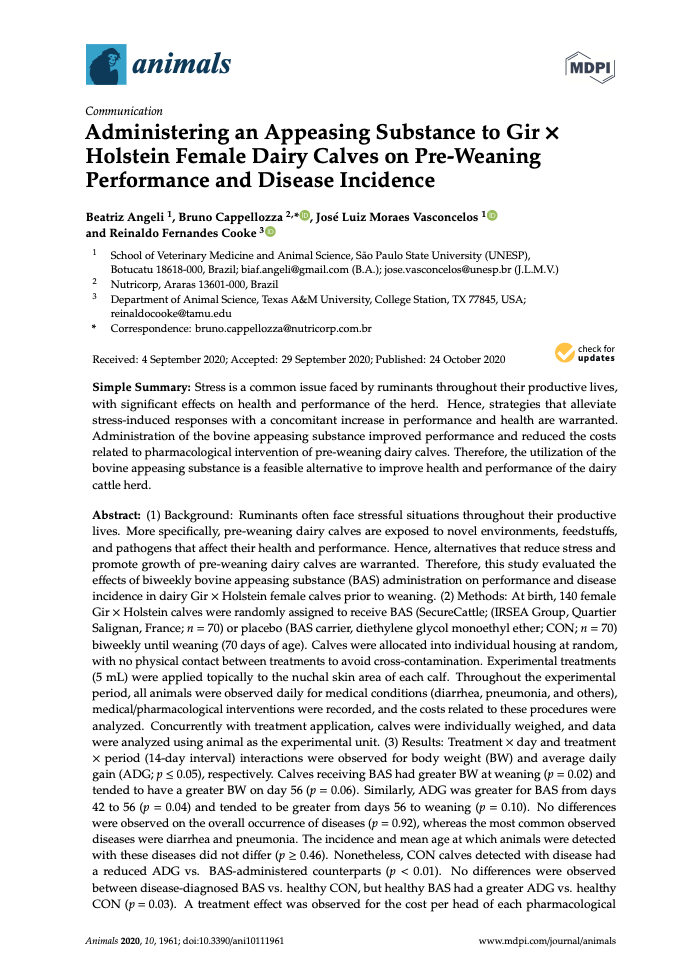Abstract:
(1) Background: Ruminants often face stressful situations throughout their productive lives. More specifically, pre-weaning dairy calves are exposed to novel environments, feedstuffs, and pathogens that affect their health and performance. Hence, alternatives that reduce stress and promote growth of pre-weaning dairy calves are warranted. Therefore, this study evaluated the effects of biweekly bovine appeasing substance (BAS) administration on performance and disease incidence in dairy Gir × Holstein female calves prior to weaning. (2) Methods: At birth, 140 female Gir × Holstein calves were randomly assigned to receive BAS (SecureCattle; (IRSEA Group, Quartier Salignan, France; n = 70) or placebo (BAS carrier, diethylene glycol monoethyl ether; CON; n = 70) biweekly until weaning (70 days of age). Calves were allocated into individual housing at random, with no physical contact between treatments to avoid cross-contamination. Experimental treatments (5 mL) were applied topically to the nuchal skin area of each calf. Throughout the experimental period, all animals were observed daily for medical conditions (diarrhea, pneumonia, and others), medical/pharmacological interventions were recorded, and the costs related to these procedures were analyzed. Concurrently with treatment application, calves were individually weighed, and data were analyzed using animal as the experimental unit. (3) Results: Treatment × day and treatment × period (14-day interval) interactions were observed for body weight (BW) and average daily gain (ADG; p ≤ 0.05), respectively. Calves receiving BAS had greater BW at weaning (p = 0.02) and tended to have a greater BW on day 56 (p = 0.06). Similarly, ADG was greater for BAS from days 42 to 56 (p = 0.04) and tended to be greater from days 56 to weaning (p = 0.10). No differences were observed on the overall occurrence of diseases (p = 0.92), whereas the most common observed diseases were diarrhea and pneumonia. The incidence and mean age at which animals were detected with these diseases did not differ (p ≥ 0.46). Nonetheless, CON calves detected with disease had a reduced ADG vs. BAS-administered counterparts (p < 0.01). No differences were observed between disease-diagnosed BAS vs. healthy CON, but healthy BAS had a greater ADG vs. healthy CON (p = 0.03). A treatment effect was observed for the cost per head of each pharmacological intervention (p = 0.05). (4) Conclusions: In summary, BAS administration at a 14-day interval improved performance and reduced the costs of pharmacological interventions of pre-weaning Gir × Holstein dairy calves.
Auteur: Beatriz Angeli, Bruno Cappellozza, José Luiz Moraes Vasconcelos and Reinaldo Fernandes Cooke
Keywords: bovine appeasing substance; dairy calves; diarrhea; performance; pneumonia
En savoir plus: https://www.mdpi.com/2076-2615/10/11/1961

